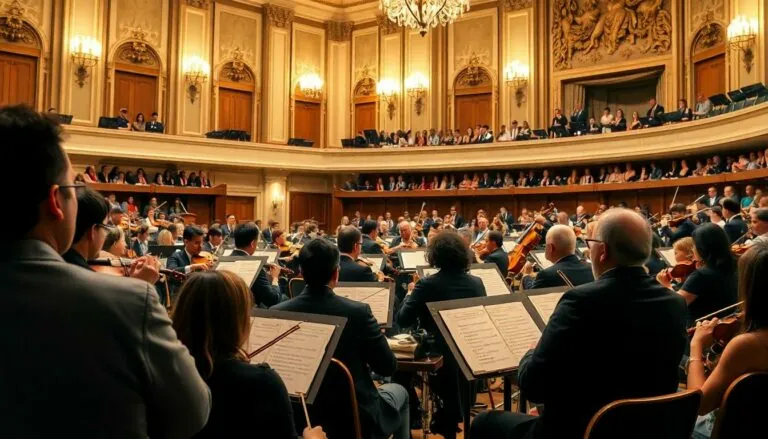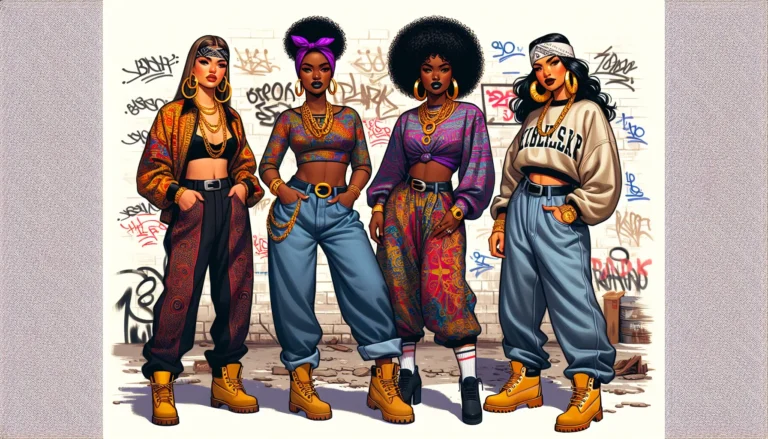Table of Contents
ToggleLatin pop music isn’t just a genre; it’s a vibrant fiesta that’ll make anyone want to dance. With infectious rhythms and catchy melodies, it’s no wonder this genre has taken the world by storm. Imagine a world where reggaeton beats make your morning coffee taste better and salsa rhythms turn mundane errands into a dance-off.
From the sultry sounds of Shakira to the electrifying beats of Bad Bunny, Latin pop has something for everyone. It’s the soundtrack of summer parties and late-night drives, blending cultures and breaking barriers. So grab your maracas and get ready to explore the colorful landscape of Latin pop music, where every note tells a story and every song is an invitation to celebrate life.
Overview of Latin Pop Music
Latin pop music blends diverse musical styles and rhythms, reflecting the rich traditions of Latin America. Genres like salsa, reggaeton, and cumbia influence its sound, capturing audiences across the globe. Iconic artists such as Shakira, Bad Bunny, and J Balvin push the boundaries of creativity, showcasing vibrant melodies and catchy lyrics.
This genre’s global success isn’t limited to any specific region. Music charts around the world feature numerous Latin pop hits, demonstrating its widespread appeal. Danceable beats and infectious hooks invite listeners to join in, making it a favorite at social gatherings and celebrations.
Latin pop also serves as a cultural bridge, connecting people from different backgrounds. Each song tells a unique story, incorporating elements from various traditions, and fostering appreciation for Latin culture. Music festivals and events celebrate this genre, highlighting its significance in the contemporary music landscape.
Emerging artists continue to innovate within the genre, bringing fresh sounds and collaborations. Their contributions expand the reach of Latin pop, attracting a broader audience. Playlists on streaming platforms often feature a mix of classic hits and contemporary tracks, ensuring listeners experience the genre’s evolution.
Market research indicates Latin pop’s growth shows no signs of slowing down. Statistics reveal an increasing number of followers on social media platforms and engaged fans worldwide who eagerly await new releases. This dynamic nature keeps the genre vibrant and relevant, affirming its place in the music industry.
Origins and Evolution
Latin pop music has deep historical roots that trace back to various cultural traditions. The genre emerged in the late 20th century, incorporating elements from Latin American folk music, rock, and pop. Key influences include bolero and traditional Latin rhythms, which shaped early pop styles.
Historical Roots
Early influences stem from regions such as Cuba and Brazil, where rhythms like son, samba, and bossa nova laid the groundwork. In the 1950s, artists like Tito Puente popularized Latin jazz, blending jazz with Afro-Cuban rhythms. Growth continued into the 1980s, with artists like Gloria Estefan bringing Latin sounds into mainstream pop. The 1990s saw the rise of artists such as Ricky Martin and Marc Anthony, who further paved the way for Latin pop globally.
Influences from Other Genres
Latin pop combines a rich tapestry of influences from numerous genres. Reggaeton introduced unique urban beats, impacting mainstream appeal. Rock music infused energy, with strong guitar riffs and catchy choruses. Additionally, electronic music introduced an innovative sound, enhancing production quality. Various genres, including hip-hop and dance, further expanded Latin pop’s reach, creating dynamic collaborations that resonate across diverse audiences.
Key Artists in Latin Pop Music
Latin pop music features a range of influential artists who have shaped the genre, both in its early days and in contemporary scenes.
Pioneers of the Genre
Gloria Estefan stands out as a driving force in Latin pop, blending upbeat rhythms with heartfelt lyrics. Ricky Martin’s energetic performances popularized Latin music worldwide, making him a household name. Marc Anthony brought a unique voice and charisma, elevating salsa to broader audiences. In addition to these stars, artists like Carlos Vives and Juanes played crucial roles in merging traditional sounds with modern beats, establishing a foundation for future generations. Their contributions created a vibrant sound that resonates today.
Contemporary Stars
Currently, Bad Bunny dominates the Latin pop landscape, using reggaeton influences to attract a global following. Shakira combines her roots with pop, producing infectious hits that captivate listeners across cultures. J Balvin’s collaboration with various artists has broadened his appeal, pushing boundaries while maintaining a strong Latin identity. These contemporary stars continue to expand the genre, incorporating diverse musical elements that reach fans worldwide. Their innovative approaches ensure Latin pop’s thriving presence in the music industry.
Characteristics of Latin Pop Music
Latin pop music features a rich tapestry of influences and rhythms, distinguishing it as a distinct and vibrant genre. Its infectious energy and captivating melodies draw listeners in across the globe.
Musical Elements
Latin pop music combines various styles, creating an engaging sound. The genre incorporates rhythms from salsa, cumbia, and reggaeton, blending them with pop, rock, and electronic music. Instruments like guitars, keyboards, and brass sections add layers to the melody, enhancing the listening experience. Catchy hooks and danceable beats dominate its structure, capturing the attention of diverse audiences. Collaborations between artists often amplify its dynamic sound, pushing the genre’s boundaries further while appealing to international listeners.
Lyrical Themes
Lyrical themes within Latin pop music capture various aspects of life and culture. Love remains a prevalent theme, often expressed in both joyous and melancholic tones. Celebrations of life, personal stories, and social issues frequently emerge in songs, resonating with listeners. The interplay between English and Spanish in lyrics broadens its appeal further, creating a connection with a wider audience. Cultural pride is also a significant aspect, as many songs highlight Latin heritage and traditions, fostering a sense of community and belonging.
The Global Impact of Latin Pop Music
Latin pop music’s influence resonates across various cultures, captivating diverse audiences. This genre’s vibrant rhythms and engaging melodies create a universal appeal.
Popularity in the United States
Latin pop has seen significant growth in the United States, especially over the past decade. Major music charts now routinely feature Latin pop hits, reflecting its widespread acceptance. Artists like Bad Bunny and J Balvin consistently dominate streaming platforms, showcasing their popularity among listeners. Concerts and festivals highlight Latin pop’s role in the music scene, drawing enthusiastic crowds. Latin pop’s ability to blend languages in lyrics fosters a unique appeal, inviting both English and Spanish speakers to engage fully.
Influence on Global Music Trends
Latin pop drives innovative trends within the global music landscape. This genre incorporates diverse cultural elements, leading to fresh sounds that often shape mainstream music. Collaborations between Latin pop and other genres, such as hip-hop and electronic dance music, have resulted in groundbreaking hits. Global streaming platforms amplify Latin pop’s reach, allowing for international collaborations and cultural exchanges. With each new release, Latin pop artists continue to set benchmarks, influencing genres beyond their traditional boundaries.
Latin pop music stands as a vibrant testament to cultural fusion and creativity. Its infectious rhythms and engaging melodies not only captivate audiences but also foster a sense of community among diverse listeners. As artists continue to innovate and push boundaries the genre’s influence expands, making it a vital part of the global music landscape.
The genre’s ability to blend traditional and contemporary sounds ensures its relevance and appeal across generations. With its rich history and dynamic evolution Latin pop will undoubtedly continue to inspire and connect people worldwide, celebrating life through music.






